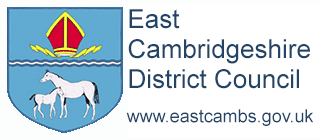If you have a food allergy or intolerance, it is important that you have the information you need to make safe food choices.
If you eat out, or order a takeaway, the restaurant or cafe must provide you with allergen information. The information could be on their menu, or you need to ask a member of staff about the allergen contents of a dish. When preparing your own food, there are allergen labelling and information laws that require food businesses to provide you with information about what is in your food.
Food businesses must inform you if they use any of 14 allergens as ingredients in the food and drink they provide. These allergens have been defined in legislation as they represent the most potent and prevalent allergens. They are; celery, cereals containing gluten (such as barley and oats), crustaceans (such as prawns, crabs and lobsters), eggs, fish, lupin, milk, molluscs (such as mussels and oysters), mustard, peanuts, sesame, soybeans, sulphur dioxide and sulphites and tree nuts (such as almonds, hazelnuts, walnuts, brazil nuts, cashews, pecans, pistachios and macadamia nuts).
Allergen labelling for pre-packed for direct sale (PPDS) food
To provide essential information to help people with a food allergy or intolerance, food businesses need to display allergen labels on pre-packed for direct sale food for their customers.
PPDS is food which is packaged at the same place it is offered or sold to consumers, and is in this packaging before it is ordered or selected.
It can include food that consumers select themselves (for example from a display unit), as well as products kept behind a counter and some food sold at mobile or temporary outlets.
Food is PPDS if:
- the food is fully or partly enclosed by the packaging
- the food cannot be altered without opening or changing the packaging
- the food is ready for sale to the final consumer
PPDS food labelling must describe the product, and a list of ingredients be marked clearly on the product. Allergens can be emphasised using bold type, capital letters, contrasting colours or underlined. If handwriting meets the legal font size requirement, a business may use handwritten labels.
For example, a cheese and pickle sandwich in sealed packaging at a registered food business, has an allergen label attached which reads the following:

May contain
Precautionary allergen labels refer to the voluntary labelling to indicate that one or more regulated allergens could be unintentionally, but unavoidably, present in a product, and thus pose a risk to susceptible customers. These are commonly seen as 'may contain [allergen]' or 'not suitable for people with a [x allergy]'.
There is no specific legal requirement for food businesses to label food with 'may contain', however, food must be safe to eat and information to help people with allergies make safe choices, and manage their condition effectively, must be provided.
Where can I get further information?
If you feel ill or have an allergic reaction after eating, you should seek medical help immediately. NHS Choices (external link) has information on what to do in the event of an allergic reaction.
- Food Standards Agency website: Food allergy and intolerance (external link)
- Food Standards Agency website: Advice for teenagers and young adults on managing food allergies (external link)
